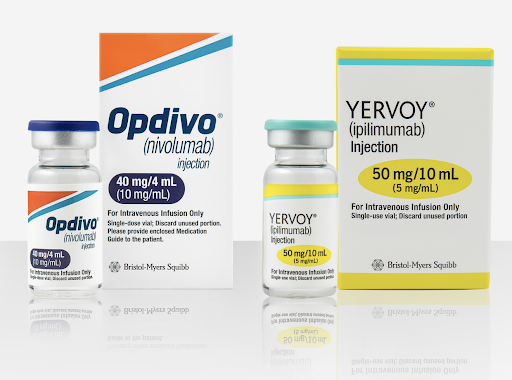Category: Treatments

Parp-Inhibitors show promise in mesothelioma treatment
At this year’s American Association for Cancer Research, investigators from the United Kingdom announced the positive results of a mesothelioma clinical trial testing a relatively new class of targeted drugs: the PARP inhibitors.
The study Niraparib Efficacy in Patients With Unresectable Mesothelioma (NERO) enrolled 88 patients randomized into two groups showed that those treated with niraparib extended the median progression-free survival by 1.5 months compared to the arm of patients who only received symptom management care.
Eligible patients had already undergone standard chemotherapy treatment for mesothelioma with success, but they relapsed with the cancer coming back or growing.
Currently, there are no proven therapies for mesothelioma beyond initial treatment and after recurrence. Data on the efficacy of chemotherapy are limited, and immunotherapy retreatment has been only a recent addition to the doctors’ treatment arsenal.
What are PARP inhibitors?
Simply put, PARP inhibitors are drugs that prevent the enzyme known as poly ADP ribose polymerase (PARP) from doing its job of repairing damaged DNA in cells. If not repaired, damaged cells, including cancer cells, die. Conversely, if repaired, even if the repair is erroneous, the cells go on to survive and replicate which can be problematic with cancerous cells. Typically, patients who responded to chemotherapy previously are more likely to see a benefit from this class of drugs. While this study did not require patients enrolled to have a somatic BAP1 deletion, other studies looking into this agent often do. Somatic mutations are those not passed down to offspring and are instead acquired in the cells over time. BAP1 is a tumor suppressor gene, therefore its deletion is understood as consequential in mesothelioma.
Clinical trials employing PARP inhibitors currently available in the United States
While this study took place in the United Kingdom, in the U.S. clinical studies utilizing PARP inhibitors have been available to mesothelioma patients who fit certain eligibility criteria. Currently, one of those studies is still open and enrolling.
Olaparib in Patients with HRD Malignant Mesothelioma is available at the University of Chicago Medicine to patients with the loss of BAP1 and/or a germline (passed down from parents) or somatic (acquired over lifetime) mutation that disrupts protein function in at least one of the patient’s genes.

Mesothelioma Treatment News: Delivering therapies directly into the pleural space
In a new article published in the medical journal The Lancet (Leveraging the pleural space for anticancer therapies in pleural mesothelioma by Blythe at al., 2024), authors make an argument for renewed focus toward therapies that can be delivered directly into the intrapleural space.
The benefit of such therapies is that by targeting the tumor directly, doctors are able to use higher doses of medication for increased likelihood of success while limiting toxicity to the patient.
Pleural mesothelioma is a cancer of the lining that surrounds the lung, which is called the pleura. So far, most attention has been devoted toward finding systemic treatments that work – a feat that has proven to be quite challenging. Systemic treatments are treatments such as chemotherapy or immunotherapy, which are administered through a vein, that travel throughout the entire body to kill the cancer cells wherever they may be. These treatments are currently the standard of care, but many patients’ tumors still don’t respond to them well. Because most patients’ cancer is quite advanced at diagnosis, this approach is often the only option anyway.
However, some patients receive a very early diagnosis either incidentally, meaning they underwent a surgical procedure for a different issue when mesothelioma was found; or because they presented with fluid buildup in the pleural space (called a pleural effusion) that prompted further testing. Recent staging studies suggest that this population of patients is significantly larger than previously thought and might include anywhere between 15% to 40% of diagnoses. For such patients, benefits of systemic therapies are unclear because studies that led to the FDA approval of chemotherapy and immunotherapy predominantly included unresectable (non-surgical candidates) stage 3 and 4 patients. Typically, early-stage patients are either offered surgery, or watchful waiting. But in the past year, this approach has been further complicated by a somewhat controversial surgical study called MARS 2 which showed limited benefits of surgery in the management of mesothelioma. Therefore, the expectation is that the number of early-stage patients who receive no immediate treatment will increase.
For this reason, the authors suggest that development of studies to test the effectiveness of localized intrapleural treatment is important and feasible and can be performed during the wait period between diagnosis and standard treatment, called window of opportunity.
In its early stages, mesothelioma’s only symptom might be a pleural effusion, either symptomatic or not. If symptomatic, once the effusion is drained, the patient feels better. But as long as mesothelioma is present on the pleura, it is rare for the fluid to stop building up. Currently, there are two ways to manage this problem:
- With a procedure called pleurodesis. The purpose of the procedure is to close the space in the pleura where fluid accumulates. This procedure makes the pleural space mostly inaccessible.
- By inserting a drain catheter into the pleural space to drain the fluid as it builds up, thus leaving the pleural space accessible.
Critically, administering intrapleural therapy will require access to the pleura, so the initial course of action for palliation of the pleural fluid will need to be reviewed and will require consensus among providers. It is important to note that a previous pleurodesis might not necessarily be a disqualifying factor as long as pleural pockets of air/fluid are still present.
This article is a summary of a research study and does not constitute medical advice.

Commitment is a Key Ingredient for Mesothelioma Treatment
Having been involved with the mesothelioma community for many years, one of the defining qualities of this community is the commitment of the team. The team the patients and their families meet and the ones they never meet. Researchers have committed themselves and their careers to finding treatments for this highly complex disease for decades.
What makes a researcher continue to dedicate themselves to this challenge? Progress comes slowly and not without setbacks. Often one of the answers we receive is the stories of the patients and their families.
The passion that clinicians have for the patients affected by this disease does not waiver. Over the decades, through success and failures, they continue to work tirelessly toward a cure.
Teamwork, collaboration, and sharing have evolved over the years. Research has brought the community closer and benefitted patients. Because the patients are involved in the mesothelioma community, their passion feeds the researchers.
When talking with a researcher, they were excited about how they were taking a study that was done, looking at it with a different approach, and now we’re adding to it. This researcher was excited about the opportunity. A young researcher worked for a couple of years in the lab. Their enthusiasm was palpable.
Another long-term mesothelioma expert spoke passionately about the progress made in their career and how the treatment has been refined. The options for treatment had become specialized. Options that when they started their careers were ideas for Clinical Trials have now been proven and are a regular part of treatment options.
None of this has been easy. The road to progress in treatments of malignant mesothelioma has been long. The scientific process is strict, with results needing to be replicated independently. The science is the steam behind the engine, but the engine is the person.
Recently, while visiting a patient staying in a local hotel, he told me his weekend schedule. I was taken back. He had reconstructive surgery, where his mesothelioma returned. This was not going to interrupt the list of things he wanted to do for him. He was going to an NBA game, and the following day, he would cross the state line to check out a casino. When I told the surgeon on Monday, he could not have been more elated. This kind of approach is why the mesothelioma team does what it does. They want people to live their lives the way they choose to.
Thank you for the years of dedication and perseverance to the many scientists behind the scenes working towards a cure for malignant mesothelioma.

Mesothelioma Patient on Importance of Staying Positive During Treatment
Once a person is diagnosed with malignant mesothelioma and decides on a treatment plan, the anticipation for treatment to begin – and the reality of when it does begin – can be a challenging time.
Recently while talking with a patient, he offered his perspective on the difference between day 1 and day 2 of beginning treatment. For him, when treatment was going to be initiated, he found his mind in a unique spot. As he took in the new faces, new information, and new surroundings, new hope was born. The anticipation of the day was finally reality, and his body and mind were going down separate paths. This experience – whether it be chemotherapy, radiation, immunotherapy or surgery – is new, a road never traveled. Although education was provided prior to his intervention it is overwhelming to say the least. This first day is like no other day of your journey.
For this patient, the second time he had treatment it was no longer a new experience. For him, the reality of what he was going through was met with dread and fear. The anticipation of treatment and hope was met with growing uneasiness. Familiar faces are not new and side effects are expected and can produce anxiety. How does one deal with these days ahead, days that once provided hope and now are filled with anxiety and fear?
Wrapping your mind around the positive and trying to focus on the ultimate goal is key. These experiences are trying times and everyone masters these situations differently. Many choose to surround themselves with their most positive support team, others surround themselves with thoughts of a brighter future. Whatever way you choose is yours, and entirely up to you.
Prior to day 2 of your journey, try to focus on the part of treatment that you found positive. Experiences like treating mesothelioma bring many new possibilities. A relationship of any kind may be positive, or a certain person may have provided a warm smile which may be all you need at that very moment.
Perhaps writing in a journal as you travel this new path will bring peace to help when you reflect back on some of your symptoms and how they are improving. When people are facing their biggest adversities, sometimes there are strong positive ideas, relationships, or experiences that may change your perspective.
Receiving a diagnosis of mesothelioma is not like any other challenges that you may have faced. As we continue to see our waiting rooms filled with new faces, we are aware of the struggles that you are facing and are here for you. If there is something that you need or have questions about, please ask. The Mesothelioma Centers of Excellence are striving for a brighter future for all who have been affected by this disease one patient at a time.

First New Drug Treatment for Mesothelioma Approved by FDA in Over 16 Years
For the first time in 16 years, the U.S. Food & Drug Administration has approved a new drug combination specifically for the treatment of malignant pleural mesothelioma. The two drugs, which are to be used together when surgery is not an option, are Opdivo (nivolumab) and Yervoy (ipilimumab).
About 20,000 Americans are diagnosed with malignant pleural mesothelioma each year according to the FDA – the vast majority of which have tumors at diagnosis that cannot be removed by surgery. The devastating cancer is caused by the inhalation of asbestos fibers, often found in manufacturing, construction, mining, military, transportation and other common settings.
When combined, Opdivo and Yervoy improve T-cell function to reduce growth of the patient’s tumor.
“In 2004, FDA approved pemetrexed in combination with cisplatin for this indication, and now patients have an important, additional treatment option after more than a decade with only one FDA-approved drug regimen,” said Dr. Richard Pazdur, director of the FDA’s Oncology Center of Excellence.
The drug therapy was approved after a clinical trial involving over 600 participants with unresectable malignant pleural mesothelioma that had yet to be treated. Patients received doses of both Opdivo and Yervoy every few weeks for up to two years before results were measured.
“Approval of nivolumab plus ipilimumab provides a new treatment that has demonstrated an improvement in overall survival for patients with malignant pleural mesothelioma,” said Dr. Pazdur.
Those who took the new combination survived an average of 18.1 months from diagnosis, compared to 14.1 months for those who received standard chemotherapy.
It can be difficult to navigate the many treatment and legal options presented to mesothelioma patients after they are diagnosed. The experts at the Mesothelioma Help Organization are here to help you make sense of it – reach out today.
Free Mesothelioma Patient & Treatment Guide
We’d like to offer you our in-depth guide, “A Patient’s Guide to Mesothelioma,” absolutely free of charge.
It contains a wealth of information and resources to help you better understand the condition, choose (and afford) appropriate treatment, and exercise your legal right to compensation.
Download Now